 More than five years ago, in March 2014, we wrote about the women of Game of Thrones, and ranked the top ten at that point. However, at that point, only three series had been screened of the show. Since then, we’ve had forty-three more episodes over five seasons, and a lot of water – as well as blood and other body fluids – has flowed under the bridges of Westeros in that time. With the finale having screened last month, it seems a good point at which to go back and revise the earlier article, in the light of subsequent events.
More than five years ago, in March 2014, we wrote about the women of Game of Thrones, and ranked the top ten at that point. However, at that point, only three series had been screened of the show. Since then, we’ve had forty-three more episodes over five seasons, and a lot of water – as well as blood and other body fluids – has flowed under the bridges of Westeros in that time. With the finale having screened last month, it seems a good point at which to go back and revise the earlier article, in the light of subsequent events.
Stating the obvious, what follows includes massive spoilers for the entire show. Rankings were determined entirely at the whim of the author, based on a range of factors including survival or otherwise, eventual position in the Westeros community, glory of their fate and general bad-assery over the entire course of the show. I have to say, despite the large volumes of criticism (some of it wildly overblown: I mean, a petition for a do-over? Really?), I didn’t find the last season anywhere near as bad as some claim. Yes, elements of the writing could have been improved, and we’ll touch on a few in this countdown. But overall, it remains the finest TV series of the decade. And with that…
10. Ygritte
- Previously: #7
- Played by: Rose Leslie
- Status: Dead
- Fate: Shot with an arrow while attacking Castle Black
- Quote: “You know nothing, Jon Snow…”
One of GoT‘s many tragic love stories [seriously: do not fall in love in Westeros. It rarely ends well], Ygritte met Jon after being captured by the Night’s Watch. However, the tables were turned, with Jon becoming a prisoner of the Wildlings. Eventually, the two began a relationship, with Ygritte aggressively pursuing Jon, and eventually taking his virginity. A skilled archer and fierce fighter, she was part of the Wildling force sent to take Castle Black; they believed Jon to have defected from the Night’s Watch, but when his loyalty was exposed, the pair were separated. Ygritte shoots Jon with three arrows for his betrayal, though was unable to finish him off. When they meet again during the attack on Castle Black, her hesitation proves fatal, and she was shot in the back. I repeat: do not fall in love in Westeros.
9. Ellaria Sand
- Previously: not ranked
- Played by: Indira Varma
- Status: Unknown
- Fate: Last seen, imprisoned in King’s Landing
- Quote: “No wonder you can’t stand, you have no spine.”
The mother of the Sand Snakes – a trio described as “the show’s worst characters”, but let’s not hold that against her. She began her path of vengeance after her lover, Oberyn Martell is killed in particularly gruesome fashion by the Mountain, in Tyrion Lannister’s trial by combat. Ellaria blamed Cersei, due to her false accusation against Tyrion, and swore revenge. An attempt to kidnap Cersei’s daughter, Myrcella Baratheon, is foiled, but when Myrcella departs back to King’s Landing, a farewell kiss is fatal, due to Ellaria’s poisoned lipstick. She stages a coup in Dorne, and allies it with Daenerys Targaryen. Captured in an ambush at sea by Euron Greyjoy, she is taken to King’s Landing. There, Ellaria was imprisoned in the Red Keep and, presumably, dies in its destruction.
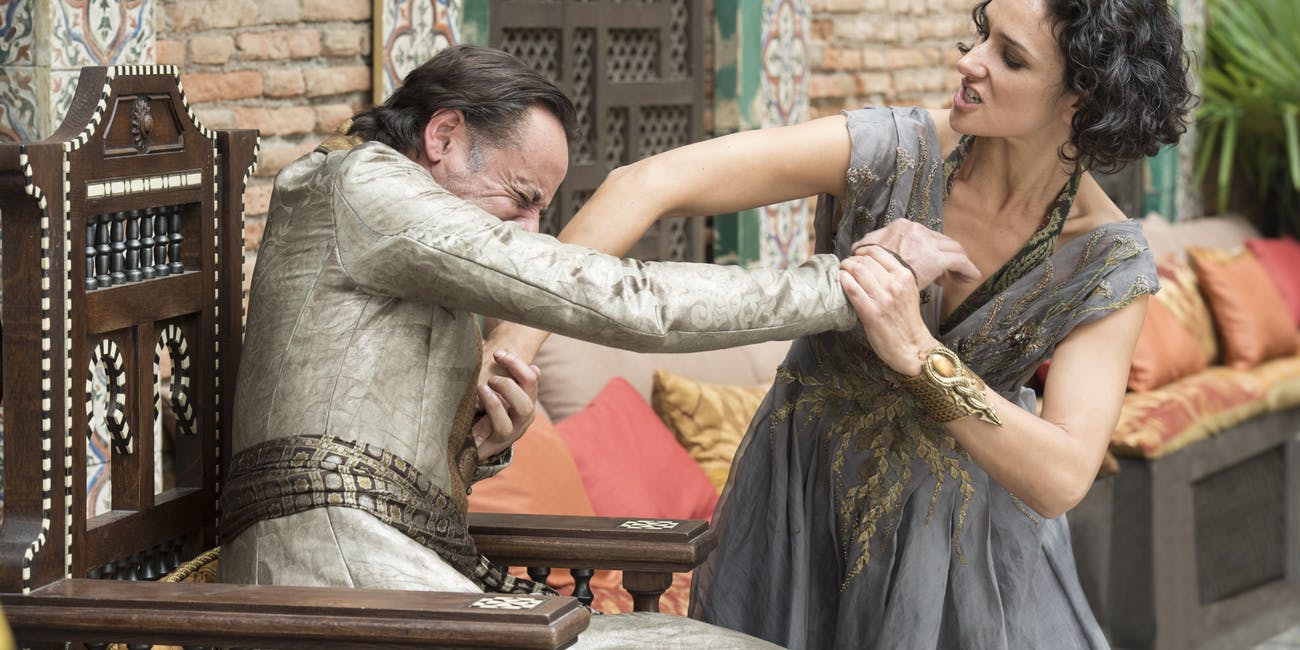
8. Olenna Tyrell
- Previously: #9
- Played by: Diana Rigg
- Status: Dead
- Fate: Takes poison, after her capture by the Lannisters.
- Quote: “I’ve known a great many clever men. I’ve outlived them all.”
The matriarch of House Tyrell was its final survivor. Initially allied with the Lannisters, her grand-daughter Margaery was briefly married to Prince Joffrey, before his death on their wedding day. But she hated Cersei with a passion, and it was mutual, with Olenna one of the few who gave no damns. Once greeted by Cersei with, “Ah, yes – the famously tart-tongued Queen of Thorns, Olenna Tyrell”, she fired back with both barrels, “And the famous tart, Queen Cersei.” While not exactly an action heroine, we’ll allow it since Diana Rigg was almost eighty, and probably already in our hall of fame, for her portrayal of Emma Peel. Olenna certainly died the way she lived – with a barbed tongue. Her last words concerned the murder of Joffrey: “Tell Cersei, I want her to know it was me.”
7. Melisandre
- Previously: #8
- Played by: Carice van Houten
- Status: Dead
- Fate: Dies of old age… kinda.
- Quote: “The night is dark and full of terrors.”
Proof of the power religious conviction can give a person, Melisandre was a fanatical devotee of R’hllor, the Lord of Light. This seemed to give her abilities including eternal youth, pyrokinesis and the ability to create shadow demons, such as the one sent to assassinate Renly Baratheon. Her faith proved infectious: she managed to convince Stannis Baratheon to burn his own daughter as a sacrifice to R’hllor. After Stannis was defeated, she turned her support to Jon Snow, whom she resurrected after his death, believing he will lead the forces of light to defeat ice. In the Battle of Winterfell, she helped convince Arya to kill the Night King, reminding her of an earlier meeting, where she said, “I see a darkness in you… Brown eyes, blue eyes, green eyes. Eyes you’ll shut forever.” Her mission accomplished, she ended the magic which had prolonged her life and expired.
6. Cersei Lannister
- Previously: #4
- Played by: Lena Headey
- Status: Dead
- Fate: Crushed in the collapse of the Red Keep
- Quote: “So we fight and die or we submit and die – I know my choice.”
I would say was a severely disappointing ending, for arguably the greatest villainess in television history. Given Cersei’s relentless pursuit of power at any cost, and the number of people she had wronged or flat-out murdered along the way, the joy of inflicting her death going to a pile of falling masonry just seems… wrong. Indeed, she was underwhelmingly absent for much of the final season, doing little except stare out the window. Considering how much she had done before then, and her outstanding qualities of ruthless ambition and cold-hearted cunning, I found this passivity hard to accept. Still, I guess her fate was prophesied by her most famous quote, “When you play the game of thrones, you win or you die.” Turns out, it was the second.

5. Yara Greyjoy
- Previously: #5
- Played by: Gemma Whelan
- Status: Alive
- Fate: Queen of the Iron Islands
- Quote: “What is dead may never die… But kill the bastards anyway.”
Life on the Iron Islands is hard, and it breeds hard folk. They don’t come much harder or fiercer than Yara. She may have been the daughter of their ruler, but had nothing handed to her, and had perpetually to battle prejudice from those ironborn who feel women should not fight or command. She led a brave attempt to rescue her kidnapped and tortured brother, Theon, but when her father was assassinated, lost out in the subsequent power struggle to his brother, Euron. Fleeing the islands, she allied with Daenerys, who preferred Yara’s terms to Euron’s more matrimonial ones. After her uncle captures her, Theon returns the earlier favour, rescuing his sister, and she retakes the Iron Islands, becoming Queen. I suspect a declaration of their independence may not be far behind.
4. Lyanna Mormont
- Previously: not ranked
- Played by: Bella Ramsey
- Status: Dead
- Fate: Crushed by a zombie giant, whom she killed with her last breath.
- Quote: “I may be small. I may be a girl. But I won’t be knitting by the fire while I have men fight for me.”
Surging in with a tiny, unstoppable bullet, she was only supposed to be in a single scene, but impressed the showrunners so much, they kept bringing her back for more. Fandom fell in love with her irrepressible attitude, which knew absolutely no fear and had a zero-tolerance policy for those who did. Woe betide anyone in the show who dared treat her like a little girl: they got off lightly if they only had to endure a withering stare in return. Before the Battle of Winterfell, she refused to take shelter in the crypt with the other women and children, and fought alongside everyone else. is The smallest character on the show fell victim to the largest, crushed in the grip of a giant. But she took it down, stabbing the monster in the eye with her dragonglass dagger. In a show where truly heroic deaths were few and far between, this was the finest one of all.
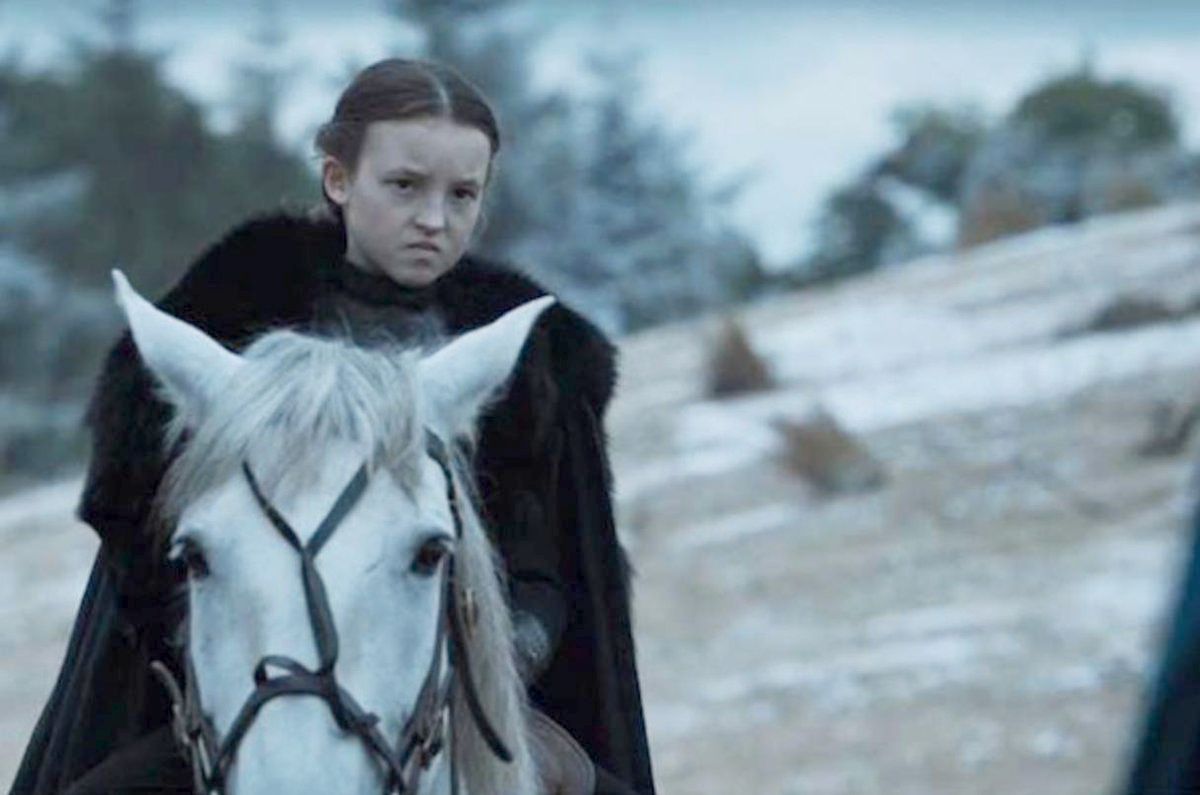
3. Ser Brienne of Tarth
- Previously: #3
- Played by: Gwendoline Christie
- Status: Alive
- Fate: Lord Commander of the Kingsguard
- Quote: “All my life, men like you have sneered at me. And all my life, I’ve been knocking men like you into the dust.”
Ah, Brienne. We pretty much fell in love with you the first time we saw you. And you remained one of the few truly good characters in the show, never compromising your morality for the sake of expediency. When you made a promise, you kept it, regardless of the personal difficulties which may have resulted. You were a better knight than a vast majority of those who bore that name, and there wasn’t a dry eye in the house – well, our house, at least – when Jamie Lannister bestowed that honour on you, the night before the Battle of Winterfell. Your romantic ideals proved a fatal weakness, however, Jamie abandoning you to return to his sister-with-benefits in King’s Landing. You deserved a considerably better finish to your own story than merely writing his down. But at least you made it through to the end with your high morals intact, as well as with your life.
2. Daenerys Targaryen
- Previously: #1
- Played by: Emilia Clarke
- Status: Dead
- Fate: Stabbed by Jon Snow
- Quote: “I’m not going to stop the wheel. I’m going to break the wheel.”
Yeah… About that… Think the 560 parents who named their daughters Khaleesi last year, are suffering a case of buyer’s remorse? For the amazing rise of Daenerys, from reluctant bride to, literally, touching the Iron Throne, imploded over the final two episodes. First, in the genocide of King’s Landing residents after their surrender; then in her death at the hand of her lover/nephew. Given how beloved a character she was, a “heel turn” like we saw in the penultimate episode was always going to be problematic for a lot of people. That’s even considering her family history of psychological issues, to put it mildly, and her fair share of immensely cruel acts, albeit with a higher degree of justification.
That may be what was missing here. Once the firestorm got under way, we saw little or nothing of Daenerys; she and her dragon became more like a natural catastrophe, raining fire from the heavens. And what we got from her in the final show was more a well-staged speech to rally the troops than any kind of explanation. I have read the interesting suggestion that her actions made most sense, if read through the lens of Machiavelli, who believed that cruelty can be well- or ill-used, and famously wrote, “It is much safer to be feared than loved.” But she stands best as a reminder of the murky world depicted in Game of Thrones, where there is rarely black and white to be found, in morality or characterization.
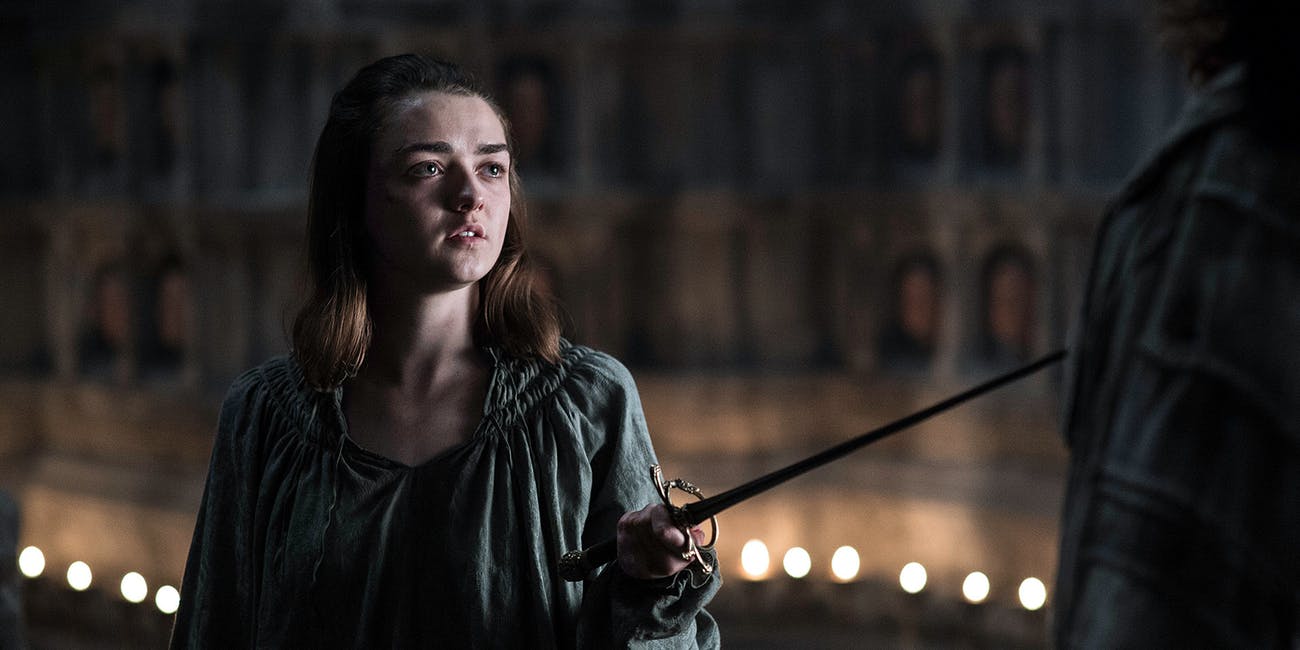
1. Arya Stark
- Previously: #2
- Played by: Maisie Williams
- Status: Alive
- Fate: Heading west to explore parts unknown
- Quote: “A bruise is a lesson… and each lesson makes us better.”
What a journey. If you watch season one, and the tiny, timid Arya, being traumatized by the execution of her father, then compare what we had by the end of the show, there seems little argument that her character’s arc has been the most monumental, even surpassing the Mother of Dragons in the final reckoning. She was always a bit of a proto-badass, demanding (and getting) sword lessons, but in the early days, it felt like a kid playing dress-up. Only after she had to go on the run and undercover, initially dressed as a boy, did we see the steel within her character, reciting like a bedtime prayer, the names of all the people she was going to kill. Most of them did end up dead, whether or not by her hand.
We probably reach Peak Arya during her stint training to be an assassin, with the Faceless Men of Braavos. Though she eventually rebelled against them, refusing to kill a target, then taking out the Waif, a colleague sent to kill Arya [which led some crazy fan theories of its own]. It still gave her the stealth and skills she would need at the Battle of Winterfell, when all seemed lost, to plunge a dragonglass dagger into the heart of the Night King, and pretty much save the entire kingdom of Westeros. Deciding, at the end, to sail away into the sunset and start afresh, was the act of a true adventurer. The tedious palace life in a Northern castle her sister “won”, was not going to be Arya’s fate. For that, and a hundred other reasons, she’s the ultimate action heroine the show gave us.
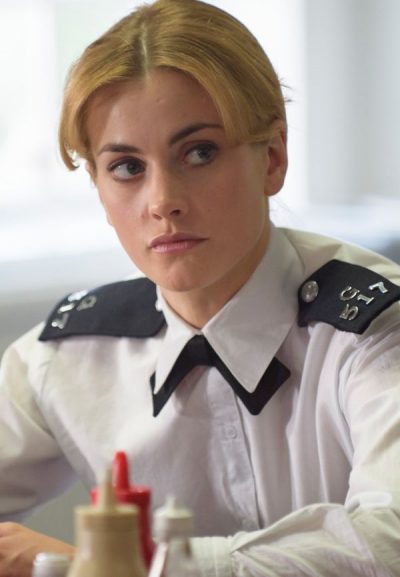 Origin stories are all the rage, it appears. Though it’s probably just coincidence we watched this prequel to Prime Suspect the same week that Joker came out. It’s not quite as successful in terms of reinventing an iconic character, or shedding light on how they became who they are. This is largely because lead actress Martini is not Helen Mirren. Though it would unfair to hold that against her – because, let’s face it, who is? While I found it interesting to see some of the early influences which turned Jane Tennison into who she is, what she became is more notable than how she got there. It’s probably more enjoyable if you can separate them, and just enjoy this on its own terms, as a period police procedural.
Origin stories are all the rage, it appears. Though it’s probably just coincidence we watched this prequel to Prime Suspect the same week that Joker came out. It’s not quite as successful in terms of reinventing an iconic character, or shedding light on how they became who they are. This is largely because lead actress Martini is not Helen Mirren. Though it would unfair to hold that against her – because, let’s face it, who is? While I found it interesting to see some of the early influences which turned Jane Tennison into who she is, what she became is more notable than how she got there. It’s probably more enjoyable if you can separate them, and just enjoy this on its own terms, as a period police procedural.




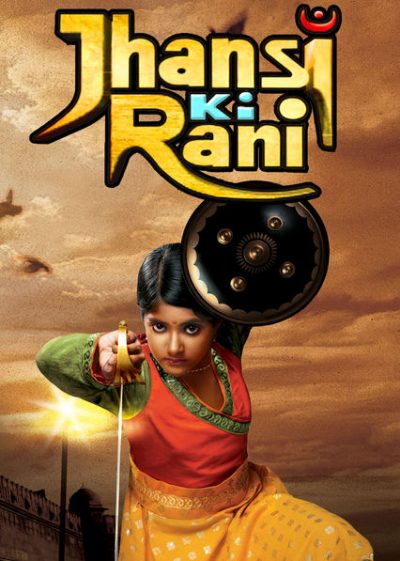 Not for the show, I should stress. But as a Brit… Wow, were were really such utter bastards to the Indians when the country was a colony? I was under the impression it was all tea and cricket. But the British, as depicted here, appear largely to be working entirely for the East Indian company, treating the local population with, at best, disdain, and often brutality. All the while, seeking to manipulate local politics (with, it must be said, the help of some Indians) to their own advantage. After 70 episodes of this, such is the guilt, I can barely enjoy my chicken tikka masala without giving it reparations.
Not for the show, I should stress. But as a Brit… Wow, were were really such utter bastards to the Indians when the country was a colony? I was under the impression it was all tea and cricket. But the British, as depicted here, appear largely to be working entirely for the East Indian company, treating the local population with, at best, disdain, and often brutality. All the while, seeking to manipulate local politics (with, it must be said, the help of some Indians) to their own advantage. After 70 episodes of this, such is the guilt, I can barely enjoy my chicken tikka masala without giving it reparations. The British – already unhappy with Manu’s rebellious outbursts – are far from happy at the prospect of her marrying Gangadhar and continuing the line. Even before she arrives at the palace, there are backroom conspiracies involving some of his relatives (not least his own mother), who ally themselves with the colonialists for their mutual benefit. These schemes go up to and include multiple assassination plots against the king, and indeed, his bride-to-be. Time for Kranti Guru to come out again, particularly to face off against gold-toothed British psychopath Marshall (Verma). His relentless pursuit, without regard for who gets hurt, earns him Manu’s undying enmity. [Weirdly, he’s played by an Indian actor in “white face”, as are some – but not all – of the other English officers, some of whom are dubbed.]
The British – already unhappy with Manu’s rebellious outbursts – are far from happy at the prospect of her marrying Gangadhar and continuing the line. Even before she arrives at the palace, there are backroom conspiracies involving some of his relatives (not least his own mother), who ally themselves with the colonialists for their mutual benefit. These schemes go up to and include multiple assassination plots against the king, and indeed, his bride-to-be. Time for Kranti Guru to come out again, particularly to face off against gold-toothed British psychopath Marshall (Verma). His relentless pursuit, without regard for who gets hurt, earns him Manu’s undying enmity. [Weirdly, he’s played by an Indian actor in “white face”, as are some – but not all – of the other English officers, some of whom are dubbed.]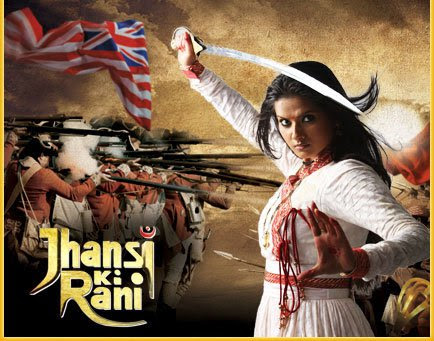 For the great majority of the time, it’s light stuff, with Manu escaping every pitfall her enemies set for her. Then, the hammer drops: to extend the GoT comparison, it’s the Rani equivalent of the Red Wedding. Fewer bodies, to be sure – just one – yet the resulting emotional wallop was still brutal, sending me through multiple stages of grief during the subsequent fall-out. “No… Surely they haven’t… It’s got to be a dream sequence.” All told, it was easily the most impactful death in any of the telenovelas I’ve watched, regardless of their origin, and the repercussions ran on for multiple episodes. As do the reaction shots. So. Many. Reaction. Shots.
For the great majority of the time, it’s light stuff, with Manu escaping every pitfall her enemies set for her. Then, the hammer drops: to extend the GoT comparison, it’s the Rani equivalent of the Red Wedding. Fewer bodies, to be sure – just one – yet the resulting emotional wallop was still brutal, sending me through multiple stages of grief during the subsequent fall-out. “No… Surely they haven’t… It’s got to be a dream sequence.” All told, it was easily the most impactful death in any of the telenovelas I’ve watched, regardless of their origin, and the repercussions ran on for multiple episodes. As do the reaction shots. So. Many. Reaction. Shots.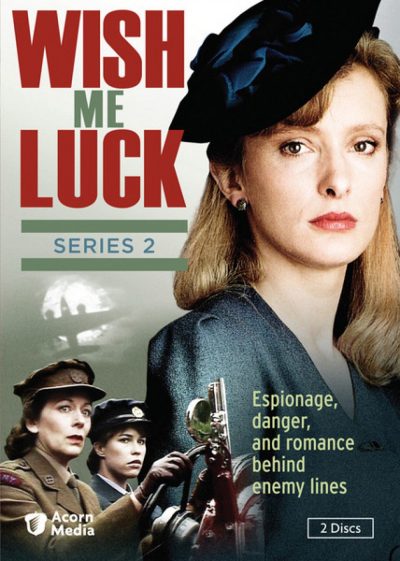 This British TV series ran for three series from 1988 through 1990, with 23 episodes (each an hour long including commercials) in total. The same creators had previously been responsible for another WW2-based show, Tenko, about women in a Japanese prisoner-of-war camp after the fall of Singapore. The time period here is similar – the second half of World War 2 – but the focus moves from the Far East to Occupied Europe, in particular, France. At this point, the Allies were sending in agents to assist the local Resistance – and as
This British TV series ran for three series from 1988 through 1990, with 23 episodes (each an hour long including commercials) in total. The same creators had previously been responsible for another WW2-based show, Tenko, about women in a Japanese prisoner-of-war camp after the fall of Singapore. The time period here is similar – the second half of World War 2 – but the focus moves from the Far East to Occupied Europe, in particular, France. At this point, the Allies were sending in agents to assist the local Resistance – and as 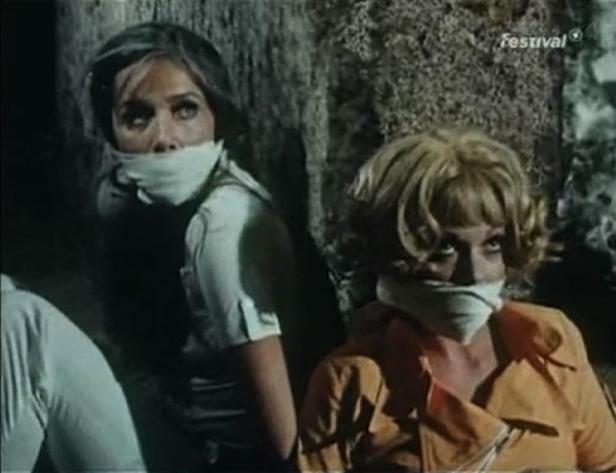 What sounds like a mid-60s promotion intro to The Avengers (John Steed + Emma Peel, not the other ones!) is indeed a spoken monologue. And it leads into one of the strangest oddities in the “girls with guns”-subgenre, which still can surprise me when I dig out something new. Now, I don’t want to summarize the whole of German film-making history, but I think a couple of words would actually be quite helpful in this case, before we get under way.
What sounds like a mid-60s promotion intro to The Avengers (John Steed + Emma Peel, not the other ones!) is indeed a spoken monologue. And it leads into one of the strangest oddities in the “girls with guns”-subgenre, which still can surprise me when I dig out something new. Now, I don’t want to summarize the whole of German film-making history, but I think a couple of words would actually be quite helpful in this case, before we get under way.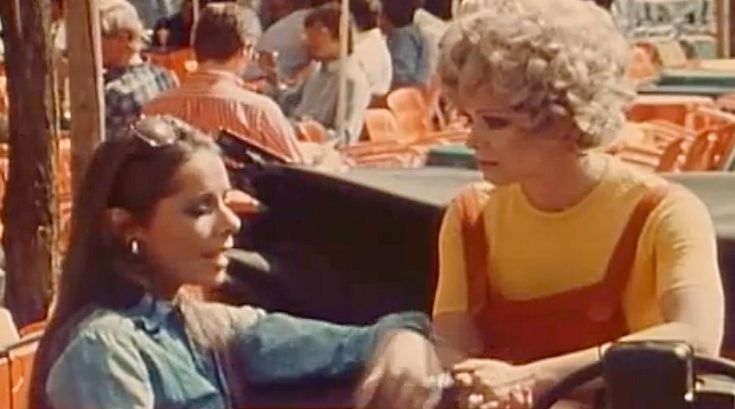 And while American cinema gradually got its mojo back, as film makers like Spielberg, Lucas and others fully reinvented the fantastic film, that never happened to Germany. It initially suffered from state-funded “author’s cinema”, resulting in very boring movies, mostly forgotten today. But it mainly degenerated into very average and (in my personal opinion, mostly lame) TV-crime shows. They lacked the wonderful mixture of over-the-top, unambiguous heroes and villains, uncanny horror-like atmosphere and outlandish plots of the Edgar Wallace movies of the 60s.
And while American cinema gradually got its mojo back, as film makers like Spielberg, Lucas and others fully reinvented the fantastic film, that never happened to Germany. It initially suffered from state-funded “author’s cinema”, resulting in very boring movies, mostly forgotten today. But it mainly degenerated into very average and (in my personal opinion, mostly lame) TV-crime shows. They lacked the wonderful mixture of over-the-top, unambiguous heroes and villains, uncanny horror-like atmosphere and outlandish plots of the Edgar Wallace movies of the 60s.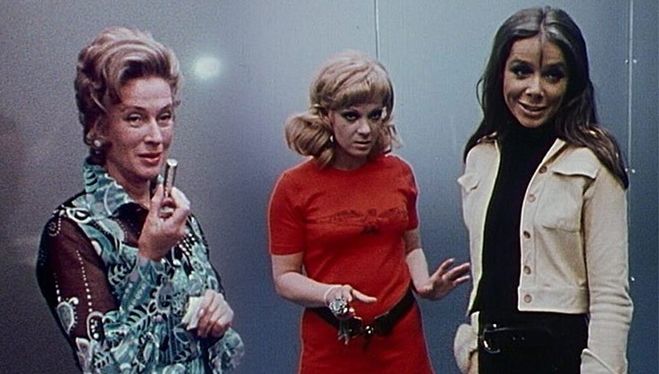 Upon closer inspection, I get the impression the makers of this show must have been inspired by shows from abroad. In the mid-60s, the Steed/Peel Avengers enjoyed great success on German TV screens. There was the similar themed Department S and I’m quite sure the original Mission Impossible series also ran on TV in the early 70s. Though, Okay, S.I.R. can’t for a moment compete with these much better shows, it is by German standards a miracle such a series was produced at all. The 70s in Germany still weren’t a time when anything fantastic would be embraced. Heck, when the first Star Wars came out, that movie was heavily lambasted by critics as “fascism in space” and “fantastical nonsense” that would spoil the youth.
Upon closer inspection, I get the impression the makers of this show must have been inspired by shows from abroad. In the mid-60s, the Steed/Peel Avengers enjoyed great success on German TV screens. There was the similar themed Department S and I’m quite sure the original Mission Impossible series also ran on TV in the early 70s. Though, Okay, S.I.R. can’t for a moment compete with these much better shows, it is by German standards a miracle such a series was produced at all. The 70s in Germany still weren’t a time when anything fantastic would be embraced. Heck, when the first Star Wars came out, that movie was heavily lambasted by critics as “fascism in space” and “fantastical nonsense” that would spoil the youth. The series is mainly what we would call “camp” today. It’s a very odd TV relic from the early 70s, though I had a lot of fun watching the series. Just to see the hairstyles, fashion, cars or interior designs of that time is always a marvel to behold for me! The girls themselves… truth is, they both lack a bit charisma. One would wish for them to have some good banter, clever lines of dialogue, tongue-in-cheek humor – or at least some
The series is mainly what we would call “camp” today. It’s a very odd TV relic from the early 70s, though I had a lot of fun watching the series. Just to see the hairstyles, fashion, cars or interior designs of that time is always a marvel to behold for me! The girls themselves… truth is, they both lack a bit charisma. One would wish for them to have some good banter, clever lines of dialogue, tongue-in-cheek humor – or at least some  While today’s viewers may look, with some amusement, down on this strange German attempt at being different, at the time it was produced this was groundbreaking. The idea of women taking over the investigator’s job was absolutely unthinkable for Germany at that time. It would take five more years, until 1978, before the first female police inspector would appear in Tatort (an extremely long-running and realistic crime investigation series, still being made today). That would eventually help lead to a lot of TV-Krimi series of female police investigators in the 1990s.
While today’s viewers may look, with some amusement, down on this strange German attempt at being different, at the time it was produced this was groundbreaking. The idea of women taking over the investigator’s job was absolutely unthinkable for Germany at that time. It would take five more years, until 1978, before the first female police inspector would appear in Tatort (an extremely long-running and realistic crime investigation series, still being made today). That would eventually help lead to a lot of TV-Krimi series of female police investigators in the 1990s.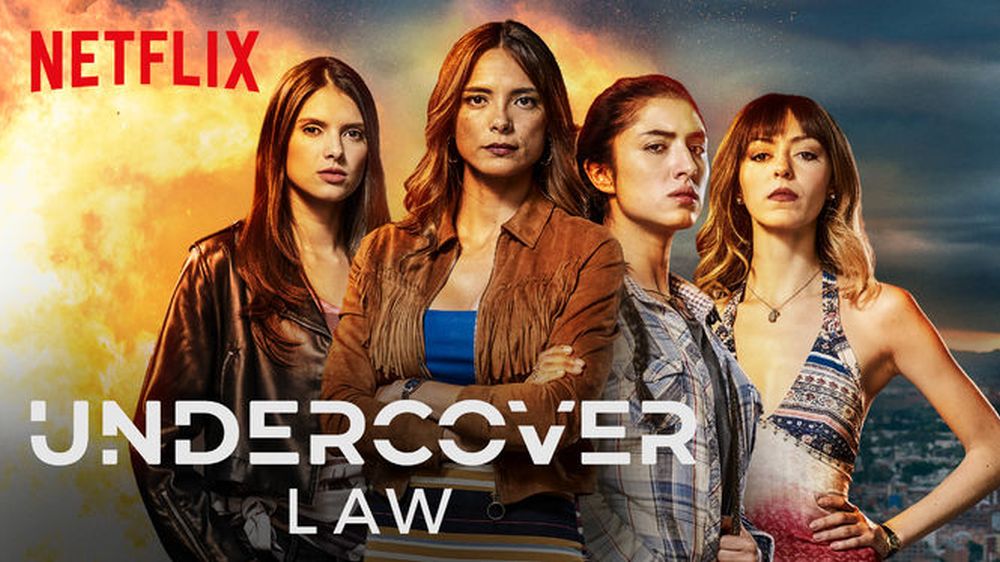 ★★½
★★½ More than five years ago, in March 2014, we wrote about the
More than five years ago, in March 2014, we wrote about the 



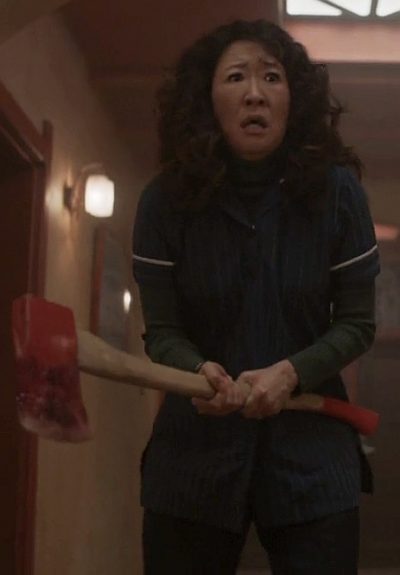 [Warning: this piece will contain significant spoilers for the show. READ ON AT YOUR OWN RISK!] It was always going to be difficult, if not impossible, for the second series of Killing Eve to match the brilliance of the first. That had ended with mousy MI-5 desk jockey Eve (Oh) stabbing ruthless assassin Villanelle (Connor), as they lay on a bed – platonically, but you could cut the sexual tension with a knife. Where would things go from there? The answer, unfortunately, is nowhere particularly much, except for some thoroughly unconvincing plot twists, such as Villanelle going to work for MI-5. Hello? Did everyone forget her cold-blooded murders of agents Bill Pargrave and Frank Haleton in season one? Let’s just pretend she’s one of us, and send her off on a mission without so much as a background check, m’kay?
[Warning: this piece will contain significant spoilers for the show. READ ON AT YOUR OWN RISK!] It was always going to be difficult, if not impossible, for the second series of Killing Eve to match the brilliance of the first. That had ended with mousy MI-5 desk jockey Eve (Oh) stabbing ruthless assassin Villanelle (Connor), as they lay on a bed – platonically, but you could cut the sexual tension with a knife. Where would things go from there? The answer, unfortunately, is nowhere particularly much, except for some thoroughly unconvincing plot twists, such as Villanelle going to work for MI-5. Hello? Did everyone forget her cold-blooded murders of agents Bill Pargrave and Frank Haleton in season one? Let’s just pretend she’s one of us, and send her off on a mission without so much as a background check, m’kay?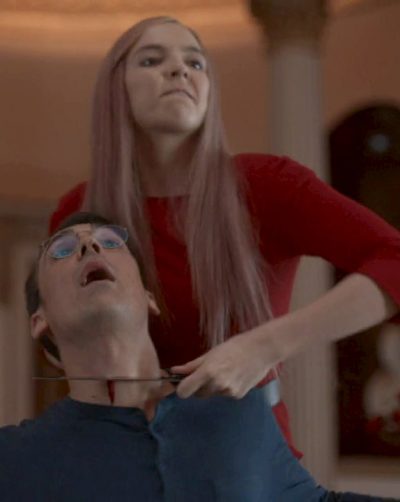 After becoming an under-the-radar hit the first time, the second set of episodes seems to have left a lot of people unsatisfied, for a variety of reason. And the ratings reflect this. Having managed the almost unprecedented feat of increasing almost every week the first time round, this season saw fewer viewers for every part after the debut, than the equivalent in series one. Maybe renewing it the day after that opening episode was a mistake? The final scene of this series ends in a mirror image of its predecessor, Villanelle shooting Eve in a fit of pique after she responds to Villanelle’s declaration of love with “You don’t know what that is,” and walks away. Of course, the renewal and critical acclaim basically make it certain Eve isn’t dead. So it’s less a case of “What will happen?”, than “What cheat will the writers use to get out of the corner into which they’ve painted themselves?” I’m going with a bullet-proof vest.
After becoming an under-the-radar hit the first time, the second set of episodes seems to have left a lot of people unsatisfied, for a variety of reason. And the ratings reflect this. Having managed the almost unprecedented feat of increasing almost every week the first time round, this season saw fewer viewers for every part after the debut, than the equivalent in series one. Maybe renewing it the day after that opening episode was a mistake? The final scene of this series ends in a mirror image of its predecessor, Villanelle shooting Eve in a fit of pique after she responds to Villanelle’s declaration of love with “You don’t know what that is,” and walks away. Of course, the renewal and critical acclaim basically make it certain Eve isn’t dead. So it’s less a case of “What will happen?”, than “What cheat will the writers use to get out of the corner into which they’ve painted themselves?” I’m going with a bullet-proof vest.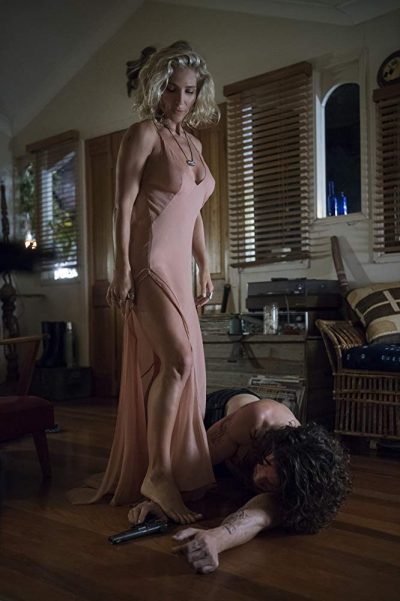 Cal McTeer (Best) has just got out of prison after serving a 12-year sentence for arson leading to murder, a crime she committed as a teenager. Returning to her home town of Orphelin Bay, she finds her brother, Augie (Jakubenko), now working as a conduit for drugs, with the connivance of at least some local cops, and supplied by the mysterious Adrielle Cuthbert (Pataky). She oversees a commune near town called L’Attente with a zero-tolerance policy for dissent, and uses the proceeds of her narco-aquatics to fund a worldwide search for mysterious fragments of pottery. Turns out she is queen of the Tidelanders: the offspring of humanity and legendary sirens who inhabit the ocean. Though Cal doesn’t know it initially, a near-death experience shows that she is of similar stock. Adrielle doesn’t like the competition. And neither does local gangster Gregori Stolin (Koman), who is intent on muscling in on Augie’s business, and cutting out the middleman, to work directly with Adrielle.
Cal McTeer (Best) has just got out of prison after serving a 12-year sentence for arson leading to murder, a crime she committed as a teenager. Returning to her home town of Orphelin Bay, she finds her brother, Augie (Jakubenko), now working as a conduit for drugs, with the connivance of at least some local cops, and supplied by the mysterious Adrielle Cuthbert (Pataky). She oversees a commune near town called L’Attente with a zero-tolerance policy for dissent, and uses the proceeds of her narco-aquatics to fund a worldwide search for mysterious fragments of pottery. Turns out she is queen of the Tidelanders: the offspring of humanity and legendary sirens who inhabit the ocean. Though Cal doesn’t know it initially, a near-death experience shows that she is of similar stock. Adrielle doesn’t like the competition. And neither does local gangster Gregori Stolin (Koman), who is intent on muscling in on Augie’s business, and cutting out the middleman, to work directly with Adrielle. I was quite surprised to hear about Amazon taking up Joe Wright’s 2011
I was quite surprised to hear about Amazon taking up Joe Wright’s 2011 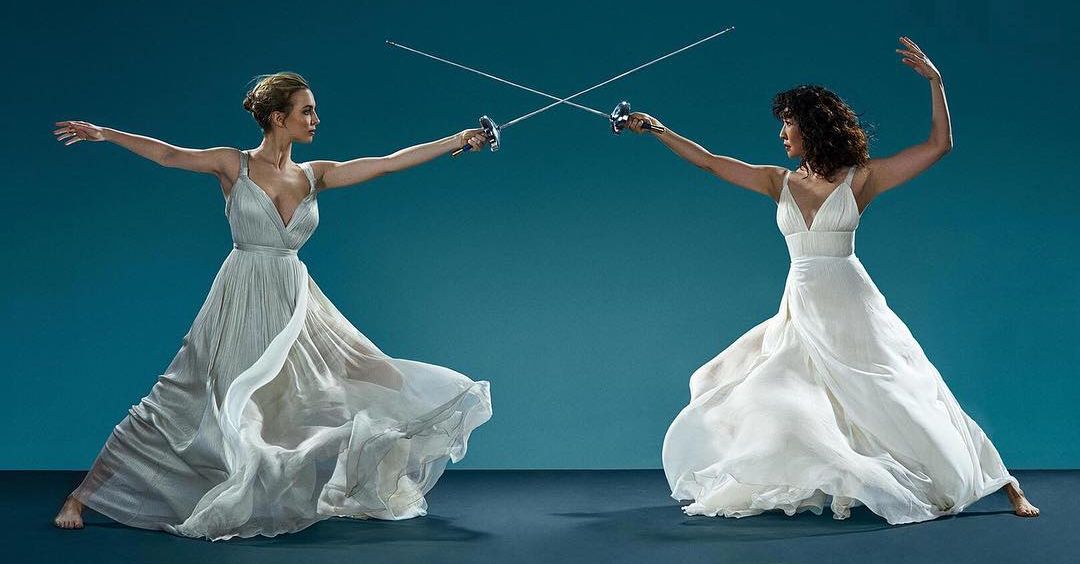
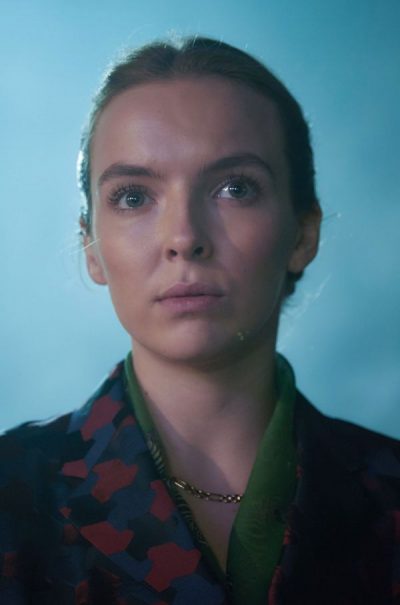 Villanelle
Villanelle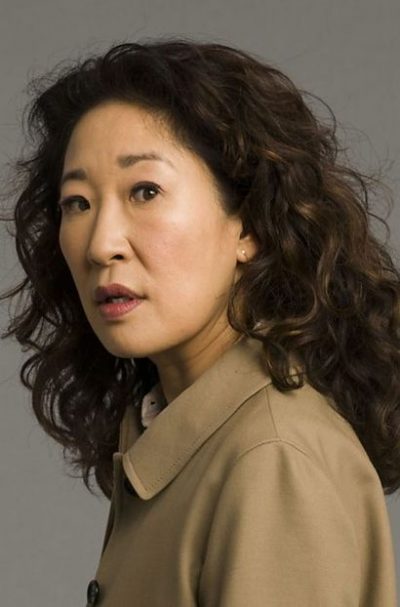 Eve Polastri
Eve Polastri Eve vs. Villanelle
Eve vs. Villanelle